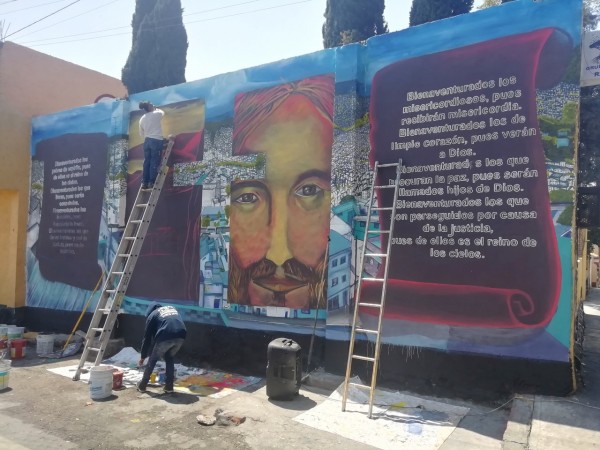
In an article published in the April edition of Vida Nueva, a Catholic magazine in Spain, Pope Francis wrote of the need and urgency of creating a “Plan for Resurrection.” Making reference to Mary Magdalene and the other Mary encountering the empty tomb, with the large stone rolled aside, the pope says that we find ourselves in a situation where we may be asking ourselves the same question that the women asked when they were on their way to the tomb: “Who will roll the stone from the tomb,” for us? (Mk 16:3). Francis reflects that “the heaviness of the stone in front of the tomb that seems to impose itself before the future, and that threatens, with its call to realism, to entomb all hope.” But the women “in the face of doubts, suffering, perplexity before the situation, and even fear ... were able to move forward and not be paralyzed by what was happening.”
Thus, they arrive at the tomb “in the midst of their occupations and worries,” and they do not realize that "the stone had already been rolled over." “Only a shocking news was able to break the circle that impeded them from seeing that the stone had already been rolled away”: He is not here. He is risen.
Pope Francis proposes that the international crises presented by the novo corona virus is a “favorable time” to have new creativity regarding the possibilities within our social structures and organizations. Illumined by the Gospel and inspired by the Holy Spirit, we can see in this historic moment the importance of “uniting the whole of the human family in the search of a sustainable integral development,” (citing himself in Laudato Sí, n. 13). Something we have learned in this pandemic is that, “no one is saved alone.” While this is reflected in the Scriptures and in the teachings of the Church, we are living it out in a direct way today, with the need for communal efforts in order to slow the spread of COVID-19.
It is precisely in this time of coming to terms with a “new-normal” that Francis sees the opportunity for us to be intentional with regard to how we relate to one another and how to build a world economy and society that overcomes what Francis deems the “globalization of indifference.” This is to say, we can be intentional about what the “new-normal is,” and instead of simply going back to what was, to rather have a socio-economic network that is based on social and religious values that protect the dignity of the human person, instead of seeing a person as something to be exploited as a laborer, or even, consumer.
Jesus gives clear guidance of how to build up such a society in the values presented in the Beatitudes. In May, Pablo Cirujeda, priest of the CSP working in Nuestra Señora del Rosario Parish in Mexico City, reflected in this blog on the Beatitudes as “a Roadmap in Times of the Pandemic.” He said there: “The Beatitudes do not contain an empty promise of future comfort, nor an invitation to resignation in the face of present suffering. Rather, they are an active invitation to work to remedy the causes of human suffering.”
International news has covered how the pandemic has hit Mexico very hard, especially in the capital. Members of the CSP present there (Pablo, Sarah and Angels) have been busy aiding families in the parish and in our San José Center.
An uplifting and beautiful addition to these efforts is the mural based on the Beatitudes that the parish has had painted on one of its walls. “I had actually been planning on the mural project since September,” said Pablo. “But the artist I was working with fell through. I was just now able to find a good fit for the project, and I think it was perfect timing, to have this done in the midst of the crisis.”
We have a once in a lifetime, perhaps even once in a century, opportunity to rebuild, to resurrect as a stronger, more just society after the pandemic. The roadmap is, as it always has been, the values of hope and justice presented in the Beatitudes. “I hope,” said Pope Francis of our current moment, “that we discover ourselves with the necessary antibodies of justice, charity (love) and solidarity.”
You can see a video of the painting of the mural in Mexico here: https://youtu.be/-aarTHImiLM. If you’d like to support the work on the CSP in our efforts related to the pandemic, see https://www.csp-covid19.com.









